Guitar World Verdict
The Yamaha Storia III looks and feels different to your standard beginner models. But its lightweight build and distinctive looks come together to offer a well-thought-out, hugely rewarding package to play.
Pros
- +
Lightweight
- +
Well-priced
- +
A nice alternative to the usual beginner guitar
Cons
- -
No control over electronics
- -
The finish is divisive for some
You can trust Guitar World
The Yamaha Storia III is part of Yamaha's Storia series, which is designed to blend aesthetics with functionality, catering to both beginners and more experienced players who appreciate style as much as sound. It's also arguably among the most divisive product families in the normally demure world of acoustic guitars.
Released as a relatively new addition to Yamaha's extensive lineup, the Storia III stands out with its unique approach to acoustic guitar design, giving as much importance to its aesthetics and wall-hanging credentials as it has its fingerboard radius and choice of tone woods.
So, while Yamaha is well-known for producing reliable, high-quality instruments that maybe don't set the pulse racing, the Storia series is distinct for its emphasis on visual appeal and modern design. The Storia III, in particular, is the most visually striking of the trio, but Yamaha is quick to point out this guitar is not just about looks.
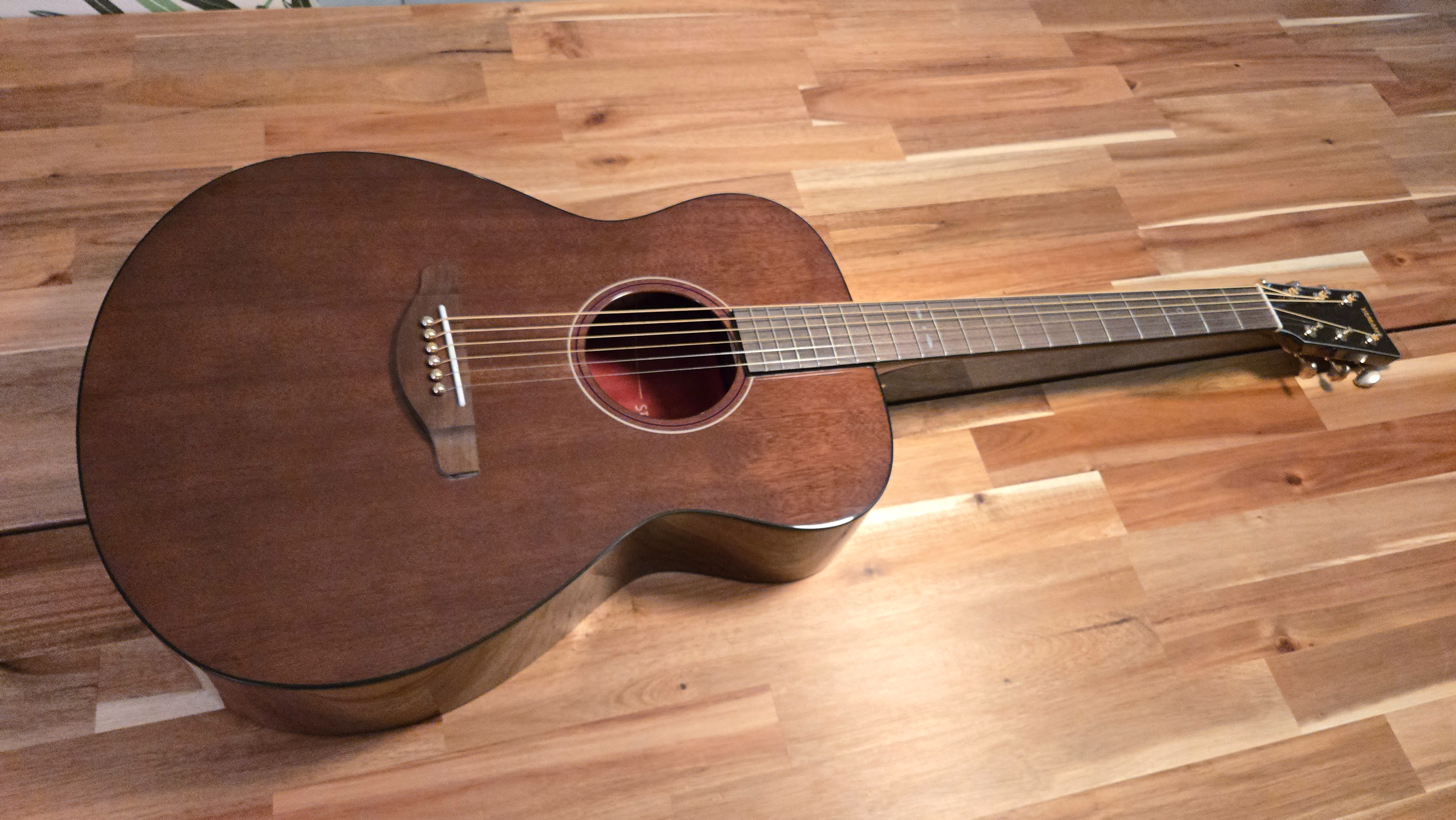
Essentially, the Storia III is a concert-sized acoustic that boasts a solid mahogany top, known for its warm and resonant tonal qualities. The back and sides are crafted from mahogany as well, which complements the top to produce a full-bodied, balanced sound. The guitar's neck is made from nato wood, a durable and cost-effective material that mimics the tonal properties of mahogany, while the fingerboard and bridge are constructed from walnut, offering a smooth playing surface and contributing to the overall tonal richness of the instrument.
Aesthetically, the Storia III is striking, with a chocolate brown top and a high gloss finish that enhances its visual appeal while also protecting the wood. As we know, though, there’s more to a guitar than its finish, so let’s look into the Storia’s performance in more detail.
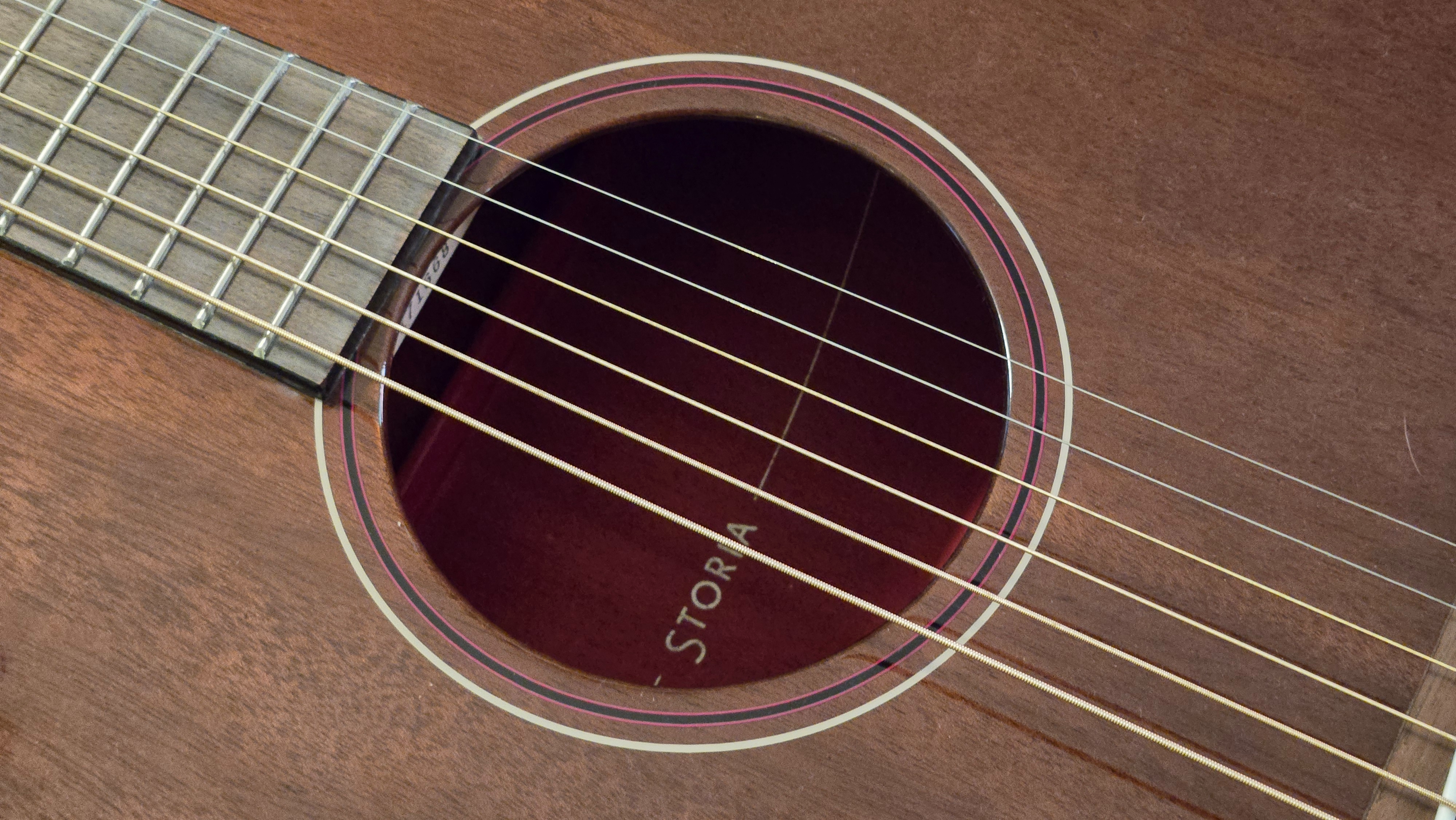
Honestly, from my time with it, I’m happy to report that the Yamaha Storia III is more than just a pretty face; it delivers a performance that matches its attractive appearance. From the minute I first picked it up, it just felt different to the usual sub-$500 acoustic guitars on the market. This is thanks to its lightweight design and seriously comfortable neck profile.
The finish on the neck made it easy to traverse the fretboard, making chord changes and complex fingerpicking patterns a breeze, although I can see those of us with sweatier palms finding it slightly sticky after a while.
The concert-sized body, meanwhile, is perfect for those of us who prefer a balanced sound with plenty of projection without the bulk of a larger dreadnought.
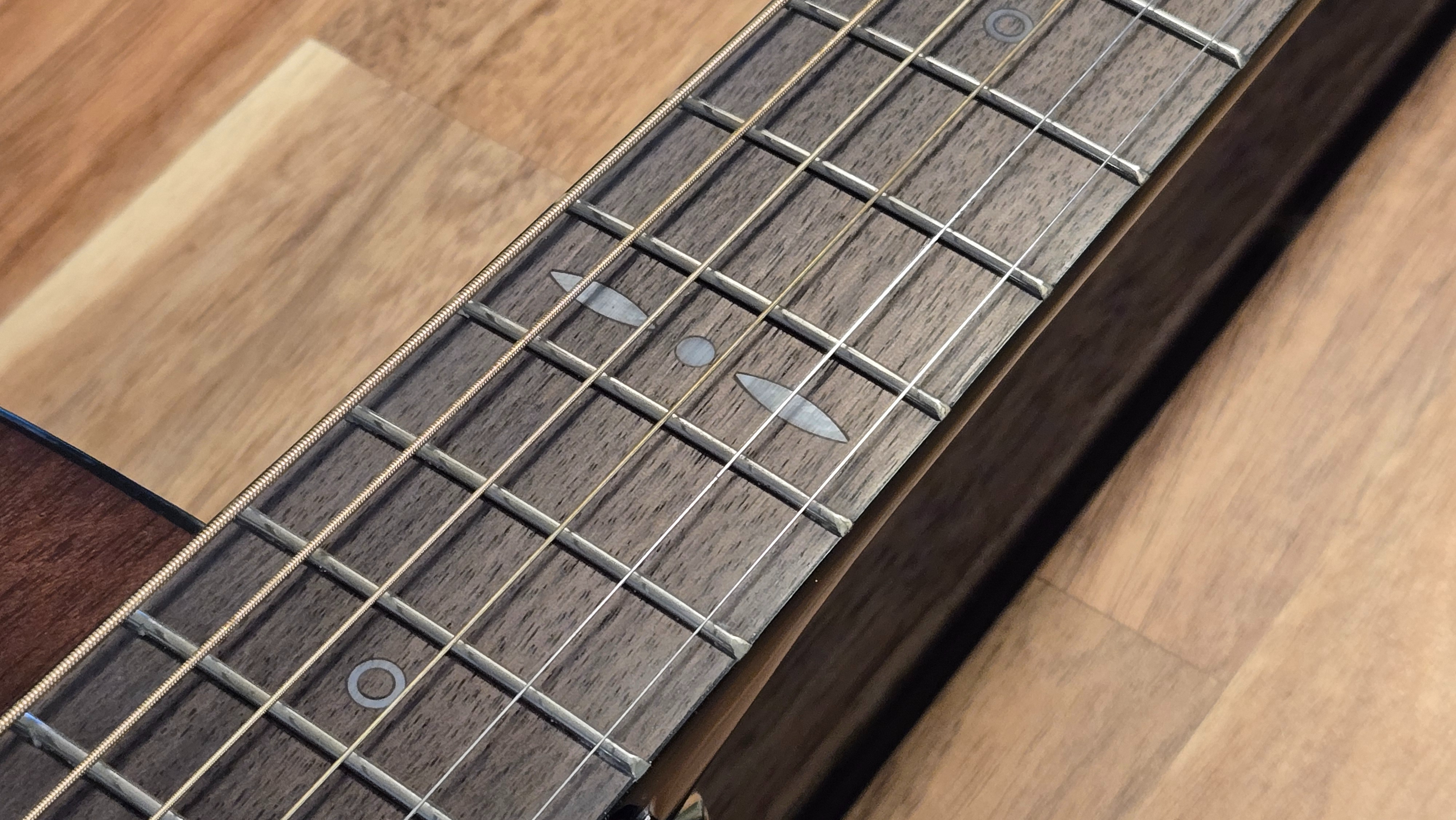
When it comes to sound, the Storia III backs up its Instagram-worthy looks. The solid mahogany top contributes to a rich midrange, while the mahogany back and sides add depth and warmth to the overall tone.
Whether I was strumming chords or picking out melodies, the guitar responded beautifully, offering a dynamic range that suited my various playing styles. The walnut fingerboard felt smooth and responsive under my fingers, providing a comfortable playing experience that made me want to keep playing for hours.
There’s also a discreet under-saddle pickup for when you’re looking to play plugged in, but without anything in the way of tone or volume control - due to its passive nature - this aspect is a touch undercooked for me.
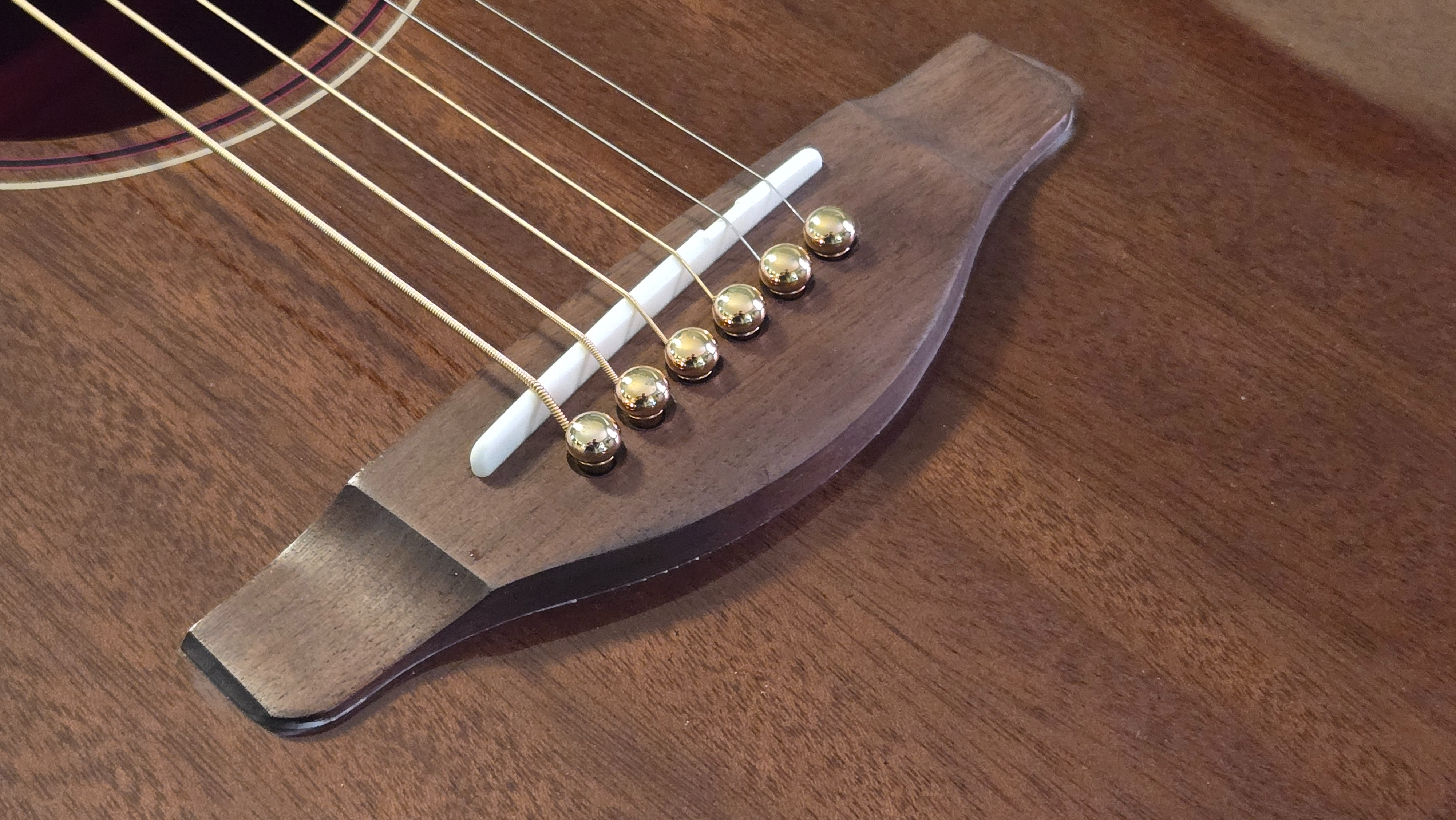
In terms of durability, I’ve no reason to doubt that the Storia III is built to last. Yamaha’s reputation for quality is clear in every aspect of the guitar’s construction. The gloss finish on the body not only enhances its visual appeal - in my opinion - but also provides a layer of protection against the odd ding, ensuring this guitar can withstand regular use without showing signs of wear.
The hardware, including the die-cast tuners and brass bridge pins, is sturdy and reliable, keeping the guitar in tune even after extended playing sessions.
Overall, the Yamaha Storia III is a well-rounded acoustic guitar with a lot to offer. You may overlook it purely because of the type of attention it garners, but you’d be missing out. For me, it’s an excellent option that combines beauty, comfort, and sound quality in one elegant package, making it easily one of the best acoustic guitars under $500 on the market right now. Why shouldn’t a guitar look nice, after all?
Whether you’re performing on stage, practicing at home, or staring at it hanging on the wall, the Storia III consistently delivers an enjoyable playing experience that’s hard to beat at its price point.
Specifications
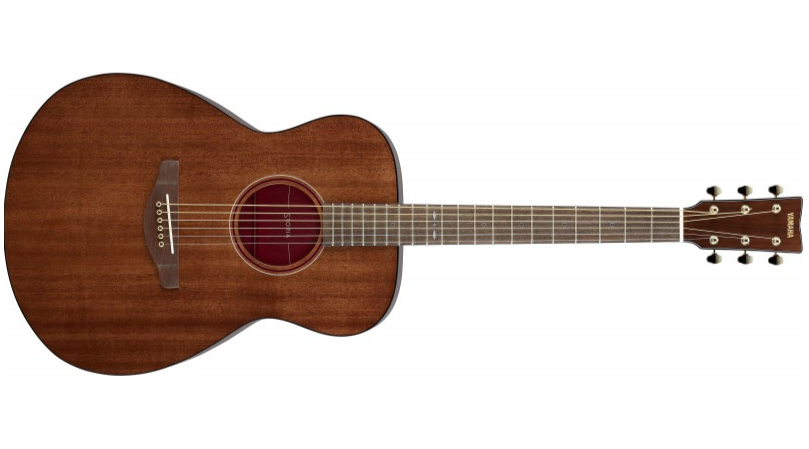
- Top: Mahogany
- Back & Sides: Mahogany
- Neck Wood: Nato
- Fingerboard: Walnut
- Bridge: Walnut
- Number of Frets: 22
- Scale Length: 25”
- Electronics: Yamaha passive undersaddle pickup
- Contact: Yamaha
Chris Corfield is a journalist with over 12 years of experience writing for some of the music world's biggest brands including Orange Amplification, MusicRadar, Guitar World, Total Guitar and Dawsons Music. Chris loves getting nerdy about everything from guitar gear and synths, to microphones and music production hardware.
“I was in a frenzy about it being trapped and burnt up. I knew I'd never be able to replace it”: After being pulled from the wreckage of a car crash, John Sykes ran back to his burning vehicle to save his beloved '76 Les Paul
“It holds its own purely as a playable guitar. It’s really cool for the traveling musician – you can bring it on a flight and it fits beneath the seat”: Why Steve Stevens put his name to a foldable guitar
“A virtuoso beyond virtuosos”: Matteo Mancuso has become one of the hottest guitar talents on the planet – now he’s finally announced his first headline US tour












